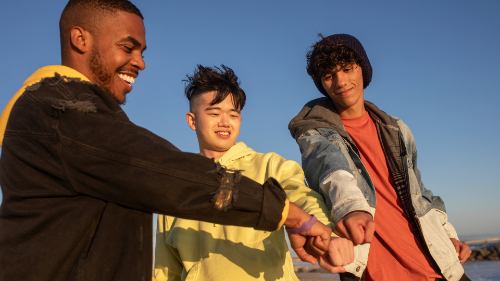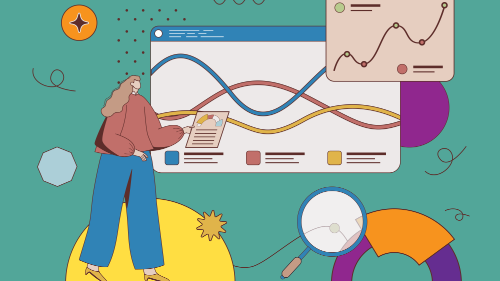Engaging Youth through Experiential Learning

What is Experiential Learning?
Experiential learning engages students in active learning by transforming classroom lessons into hands-on activities in real-world contexts. Instead of listening to the instructor talk about how to do something, young people learn through the experience of doing the task and then reflecting on the experience.
As articulated by David Kolb, experiential learning is a cycle with four components [1]:
-
Concrete experience — try it out and see what happens!
At the heart of experiential learning is direct experience itself. We're not on the outside looking in so much as we are right in the thick of it: trying out something new or testing our ideas, intentionally doing something.
-
Reflective observation — what is going well, what isn't, what surprised us?
But we're not just doing mindlessly! We're reflecting on what is happening — making connections to past experience, checking reality against our expectations, being curious, taking note, and sharing what we find with other learners. Reflection happens both during and after the experience.
-
Abstract conceptualization — how does this fit with what we already knew? Did we learn something new?
Now we compare our new experience with our existing knowledge, and wrestle with what it all means. How does this experience fit with what we know of the world? Or maybe it doesn't fit! What do other learners think about it? What could we do differently?
-
Active experimentation — what can we do now with what we've learned? What should we try next?
In this stage, we take what we've learned and run with it! We test our new theory of the case — and begin the cycle of learning all over again.
There are an endless number of activities that can be explored using the experiential learning framework. Here are just a few examples:
- Growing a garden
- Giving a presentation
- Running a campaign
- Science experiments
- Planning a rally
- Learning to drive
- Service-learning
- Adventure training
- Social and emotional learning activities
- Mindfulness training
- Skilled trade apprenticeships
What are the benefits of experiential learning?
The elements of experiential learning facilitate the development of new skills and new ways of thinking. By incorporating the senses, feelings, and cognition, experiential learning helps us retain new information. Importantly in an age of heightened mental stress among adolescents, some experiential learning programs have been shown to foster subjective well-being, prosocial behavior, and empathy [2].
Experiential Learning Resources
Experiential Learning — What it Really Is
In this Youth Development Insight, Jessica Pierson Russo helps us see experiential learning as more than a hands-on approach. University of Minnesota Extension.
Beyond the Ropes — Principles of Facilitating Experiential Learning
This article by Martin Thompson highlights key points for facilitators of experiential learning programs, including instructor and student roles. MTa Learning.
Experiential Learning
This guide covers the principles, process, and application of experiential learning. While the focus here is on higher education, much of the information is applicable to youth programming. Northern Illinois University Center for Innovative Teaching and Learning.
Experiential Learning Model
Many 4-H youth development programs use a modified version of Kolb's experiential learning model. This article on the 4-H approach describes how to apply the model. University of Wisconsin-Madison Extension.
References
- Kolb, D. A. (1984). Experiential learning: experience as the source of learning and development. Englewood Cliffs, NJ: Prentice Hall.
- Chan, H. H.-K., Kwong, H. Y. C., Shu, G. L. F., Ting, C. Y., & Lai, F. H.-Y. (2021). Effects of Experiential Learning Programmes on Adolescent Prosocial Behaviour, Empathy, and Subjective Well-being: A Systematic Review and Meta-Analysis. Frontiers in Psychology, 12, 709699.







